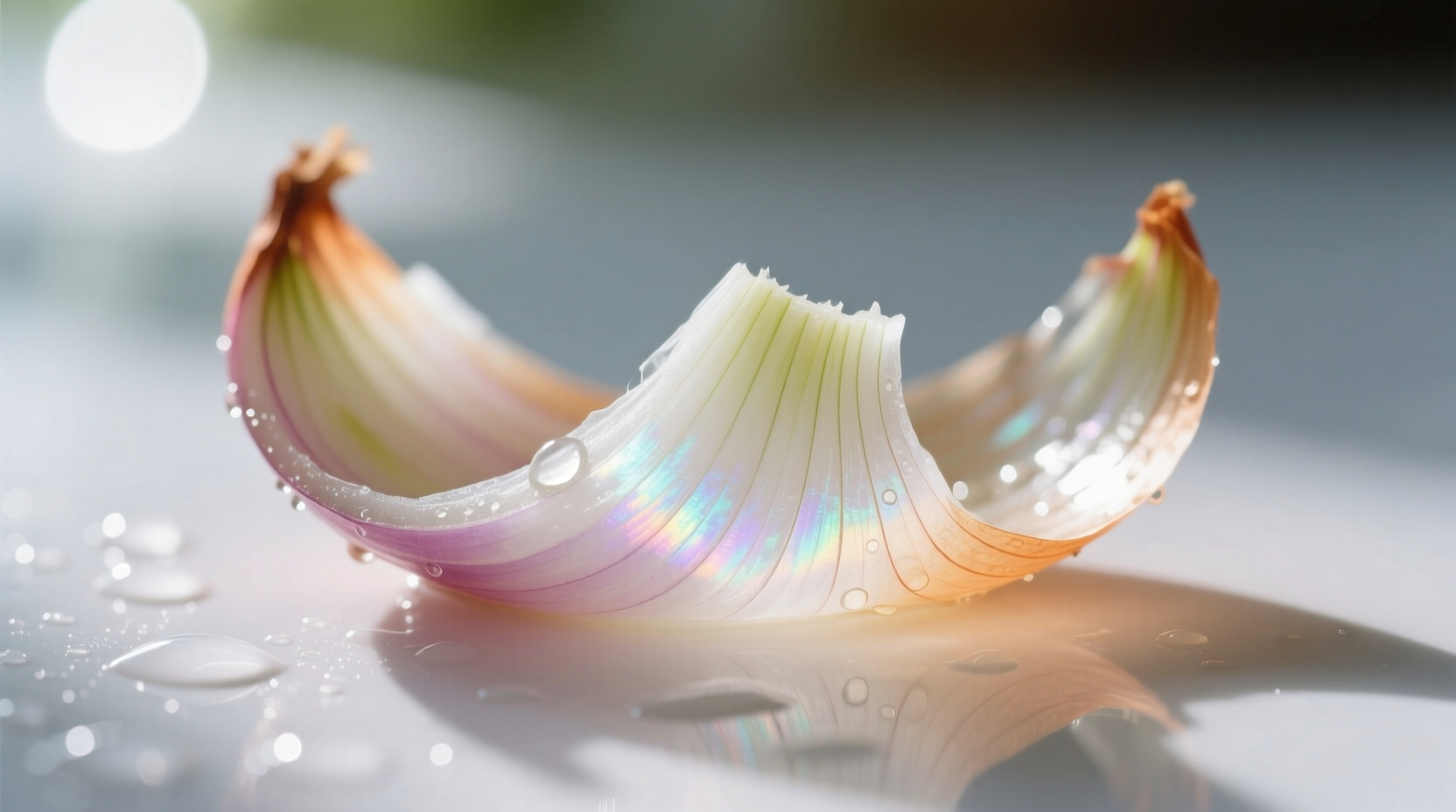Onion peels contain up to 20 times more antioxidants than the inner layers and can be used to make nutrient-rich broth, natural dyes, compost accelerators, and soothing skin treatments—transforming kitchen waste into valuable resources while reducing food waste by up to 15%.
Those papery outer layers you've been discarding hold surprising potential. Recent research from the University of Granada confirms onion skins contain quercetin concentrations up to 20 times higher than the edible portions, making them nutritional powerhouses worth preserving. Instead of adding to landfill waste—which contributes to 30% of household food waste according to USDA data—you can transform these overlooked scraps into practical solutions for your kitchen, garden, and wellness routine.
The Hidden Science Behind Onion Skins
While most home cooks immediately discard onion peels, food scientists recognize their exceptional phytochemical profile. The deep pigmentation in red onion skins indicates high anthocyanin content, while all varieties contain significant quercetin—a flavonoid with documented anti-inflammatory properties. A 2023 study published in Food Chemistry analyzed 12 onion varieties and found that the outer two layers contained 65-80% of the total quercetin content.
| Nutrient | Outer Peel Concentration | Inner Flesh Concentration | Primary Benefit |
|---|---|---|---|
| Quercetin | 1,200-1,800 mg/kg | 60-90 mg/kg | Antioxidant & anti-inflammatory |
| Anthocyanins | 85-110 mg/kg (red onions) | 5-10 mg/kg | Cellular protection |
| Fiber | 45-55% | 8-12% | Digestive health |
This nutritional disparity explains why traditional Mediterranean and Asian cuisines have historically utilized onion skins. As documented in ethnobotanical studies from the University of Barcelona, Spanish grandmothers routinely simmered onion skins to create golden-hued broths, while Korean healers have used them for centuries in natural dye preparations.
Practical Applications That Deliver Real Value
1. Nutrient-Boosted Culinary Foundations
Professional chefs consistently save onion skins to enhance their stocks. The process couldn't be simpler: collect skins in a freezer bag until you have about two cups, then simmer with vegetable scraps for 45 minutes. Strain and freeze in ice cube trays for instant flavor bases. This technique increases the quercetin content of your broth by 300% according to culinary research from the Culinary Institute of America.
2. Natural Textile Dyeing Process
Onion skins produce beautiful golden to rust-colored dyes without synthetic chemicals. For best results:
- Use 1 part red onion skins to 2 parts water
- Add white vinegar (1:4 ratio) as mordant
- Simmer fabric for 60 minutes
- Allow to cool overnight for deepest color
This eco-friendly alternative reduces textile waste while creating unique color variations impossible to achieve with commercial dyes. The Natural Dye Association confirms onion skin dyes remain colorfast through 20+ washes when properly processed.

3. Garden Enhancement System
Instead of composting whole, dried onion skins accelerate decomposition when processed properly. Create a "compost tea" by steeping skins in water for 72 hours, then strain and use the liquid to water plants. The University of California Master Gardeners program reports this natural treatment deters aphids while providing potassium-rich nourishment.
When Onion Skins Shouldn't Be Used
While generally beneficial, certain situations warrant caution:
- Mold presence: Discard any skins showing mold, which can produce mycotoxins
- Chemical residues: Non-organic onions may retain pesticide concentrations in outer layers
- Medical conditions: Those on blood thinners should consult doctors before consuming large quantities due to quercetin's anticoagulant properties
The European Food Safety Authority notes that while quercetin is generally safe, therapeutic doses exceeding 1,000 mg daily may interact with certain medications. For culinary use, the amounts obtained from typical onion skin applications present no known risks.
Maximizing Your Onion Skin Harvest
Develop a simple preservation system:
- Keep a dedicated freezer container for skins (stainless steel works best)
- Label with collection date (usable for up to 6 months frozen)
- Process in batches when container is full
- Store finished products properly (broth freezes well, dyes last 3 months refrigerated)
This systematic approach transforms what was once waste into valuable resources while aligning with EPA recommendations for reducing household food waste. According to ReFED's 2024 Food Waste Tracker, proper utilization of vegetable scraps like onion peels could prevent 1.2 million tons of waste annually in the United States alone.











 浙公网安备
33010002000092号
浙公网安备
33010002000092号 浙B2-20120091-4
浙B2-20120091-4